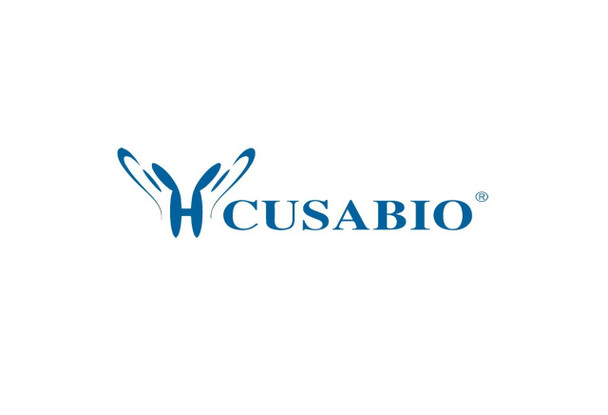Cusabio Human Recombinants
Recombinant Human Achaete-scute homolog 1 (ASCL1) | CSB-EP002199HU
- SKU:
- CSB-EP002199HU
- Availability:
- 3 - 7 Working Days
Description
Recombinant Human Achaete-scute homolog 1 (ASCL1) | CSB-EP002199HU | Cusabio
Alternative Name(s): Class A basic helix-loop-helix protein 46
Gene Names: ASCL1
Research Areas: Neuroscience
Organism: Homo sapiens (Human)
AA Sequence: MESSAKMESGGAGQQPQPQPQQPFLPPAACFFATAAAAAAAAAAAAAQSAQQQQQQQQQQQQAPQLRPAADGQPSGGGHKSAPKQVKRQRSSSPELMRCKRRLNFSGFGYSLPQQQPAAVARRNERERNRVKLVNLGFATLREHVPNGAANKKMSKVETLRSAVEYIRALQQLLDEHDAVSAAFQAGVLSPTISPNYSNDLNSMAGSPVSSYSSDEGSYDPLSPEEQELLDFTNWF
Source: E.coli
Tag Info: N-terminal 6xHis-tagged
Expression Region: 1-236aa
Sequence Info: Full Length
MW: 29.6 kDa
Purity: Greater than 85% as determined by SDS-PAGE.
Relevance: Transcription factor that plays a key role in neuronal differentiation: acts as a pioneer transcription factor, accessing closed chromatin to allow other factors to bind and activate neural pathways. Directly binds the E box motif (5'-CANNTG-3') on promoters and promotes transcription of neuronal genes. The combination of three transcription factors, ASCL1, POU3F2/BRN2 and MYT1L, is sufficient to reprogram fibroblasts and other somatic cells into induced neuronal (iN) cells in vitro. Plays a role at early stages of development of specific neural lineages in most regions of the CNS, and of several lineages in the PNS. Essential for the generation of olfactory and autonomic neurons. Acts synergistically with FOXN4 to specify the identity of V2b neurons rather than V2a from bipotential p2 progenitors during spinal cord neurogenesis, probably through DLL4-NOTCH signaling activation. Involved in the regulation of neuroendocrine cell development in the glandular stomach (By similarity).
Reference: "Identification of a human achaete-scute homolog highly expressed in neuroendocrine tumors." Ball D.W., Azzoli C.G., Baylin S.B., Chi D., Dou S., Donis-Keller H., Cumaraswamy A., Borges M., Nelkin B.D. Proc. Natl. Acad. Sci. U.S.A. 90:5648-5652(1993)
Storage: The shelf life is related to many factors, storage state, buffer ingredients, storage temperature and the stability of the protein itself. Generally, the shelf life of liquid form is 6 months at -20?/-80?. The shelf life of lyophilized form is 12 months at -20?/-80?.
Notes: Repeated freezing and thawing is not recommended. Store working aliquots at 4? for up to one week.
Function:
Involvement in disease:
Subcellular Location:
Protein Families:
Tissue Specificity:
Paythway:
Form: Liquid or Lyophilized powder
Buffer: If the delivery form is liquid, the default storage buffer is Tris/PBS-based buffer, 5%-50% glycerol. If the delivery form is lyophilized powder, the buffer before lyophilization is Tris/PBS-based buffer, 6% Trehalose, pH 8.0.
Reconstitution: We recommend that this vial be briefly centrifuged prior to opening to bring the contents to the bottom. Please reconstitute protein in deionized sterile water to a concentration of 0.1-1.0 mg/mL.We recommend to add 5-50% of glycerol (final concentration) and aliquot for long-term storage at -20?/-80?. Our default final concentration of glycerol is 50%. Customers could use it as reference.
Uniprot ID: P50553
HGNC Database Link: N/A
UniGene Database Link: N/A
KEGG Database Link: N/A
STRING Database Link: N/A
OMIM Database Link: N/A









